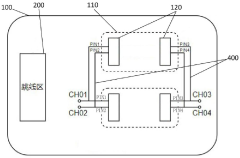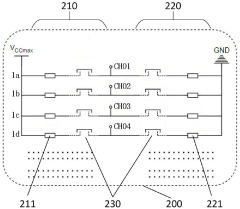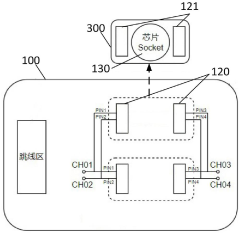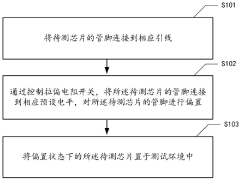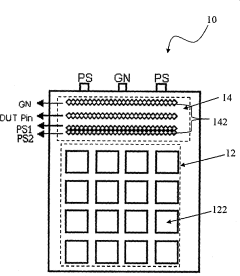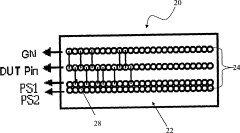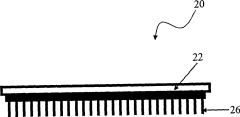On-Board Charger Reliability: THB/HAST/Vibration And Acceptance
SEP 23, 20259 MIN READ
Generate Your Research Report Instantly with AI Agent
Patsnap Eureka helps you evaluate technical feasibility & market potential.
OBC Reliability Background and Objectives
On-Board Chargers (OBCs) have evolved significantly over the past decade, transitioning from basic charging solutions to sophisticated power conversion systems that are critical components in electric vehicles (EVs). The reliability of these systems directly impacts vehicle performance, safety, and consumer confidence in EV technology. As the automotive industry accelerates toward electrification, ensuring OBC reliability under various environmental and operational conditions has become paramount for manufacturers and suppliers alike.
The evolution of OBC technology has been driven by demands for higher power density, improved efficiency, and enhanced durability. Early generations of OBCs typically delivered 3.3kW to 6.6kW of power, while current advanced systems can deliver up to 22kW, significantly reducing charging times while maintaining compact form factors. This rapid advancement necessitates equally robust reliability testing methodologies to ensure performance across diverse operating environments.
Temperature Humidity Bias (THB) and Highly Accelerated Stress Test (HAST) have emerged as critical reliability assessment protocols for OBCs. These tests simulate extreme environmental conditions to evaluate component degradation and system resilience over accelerated timeframes. THB typically subjects OBC units to 85°C temperature and 85% relative humidity under bias conditions, while HAST employs even more aggressive parameters with pressurized humidity chambers to accelerate moisture-induced failures.
Vibration testing represents another crucial dimension of OBC reliability assessment, particularly relevant given the dynamic operating environment of vehicles. Modern OBCs must withstand various vibration profiles that simulate real-world driving conditions, including rough terrain navigation and extended highway travel. Industry standards such as ISO 16750 and LV 124 provide frameworks for these evaluations, though many manufacturers implement proprietary testing protocols that exceed these baseline requirements.
The primary objective of comprehensive OBC reliability testing is to identify potential failure modes before field deployment, thereby reducing warranty claims and enhancing brand reputation. Secondary objectives include optimizing design parameters for durability, validating thermal management systems, and ensuring electromagnetic compatibility under stress conditions. These objectives align with broader industry goals of extending EV range, reducing charging times, and enhancing overall vehicle reliability.
Current reliability acceptance criteria typically require OBCs to demonstrate less than 0.1% failure rates over 10-year operational lifespans, translating to rigorous qualification requirements. As the industry progresses toward bidirectional charging capabilities and vehicle-to-grid integration, reliability standards are expected to become increasingly stringent, necessitating continuous advancement in testing methodologies and acceptance criteria.
The evolution of OBC technology has been driven by demands for higher power density, improved efficiency, and enhanced durability. Early generations of OBCs typically delivered 3.3kW to 6.6kW of power, while current advanced systems can deliver up to 22kW, significantly reducing charging times while maintaining compact form factors. This rapid advancement necessitates equally robust reliability testing methodologies to ensure performance across diverse operating environments.
Temperature Humidity Bias (THB) and Highly Accelerated Stress Test (HAST) have emerged as critical reliability assessment protocols for OBCs. These tests simulate extreme environmental conditions to evaluate component degradation and system resilience over accelerated timeframes. THB typically subjects OBC units to 85°C temperature and 85% relative humidity under bias conditions, while HAST employs even more aggressive parameters with pressurized humidity chambers to accelerate moisture-induced failures.
Vibration testing represents another crucial dimension of OBC reliability assessment, particularly relevant given the dynamic operating environment of vehicles. Modern OBCs must withstand various vibration profiles that simulate real-world driving conditions, including rough terrain navigation and extended highway travel. Industry standards such as ISO 16750 and LV 124 provide frameworks for these evaluations, though many manufacturers implement proprietary testing protocols that exceed these baseline requirements.
The primary objective of comprehensive OBC reliability testing is to identify potential failure modes before field deployment, thereby reducing warranty claims and enhancing brand reputation. Secondary objectives include optimizing design parameters for durability, validating thermal management systems, and ensuring electromagnetic compatibility under stress conditions. These objectives align with broader industry goals of extending EV range, reducing charging times, and enhancing overall vehicle reliability.
Current reliability acceptance criteria typically require OBCs to demonstrate less than 0.1% failure rates over 10-year operational lifespans, translating to rigorous qualification requirements. As the industry progresses toward bidirectional charging capabilities and vehicle-to-grid integration, reliability standards are expected to become increasingly stringent, necessitating continuous advancement in testing methodologies and acceptance criteria.
Market Requirements for EV Charging Systems
The electric vehicle (EV) market is experiencing unprecedented growth globally, with charging infrastructure becoming a critical component of this ecosystem. On-Board Chargers (OBCs) represent a fundamental element of EV architecture, allowing vehicles to connect to standard AC power sources and convert AC to DC for battery charging. Market requirements for these systems have evolved significantly, driven by consumer expectations, regulatory frameworks, and technological advancements.
Reliability stands as the foremost requirement for OBC systems, with consumers and manufacturers demanding robust performance under various environmental conditions. Temperature-Humidity-Bias (THB), Highly Accelerated Stress Test (HAST), and vibration testing have become standard benchmarks for evaluating OBC durability. Market research indicates that OBCs must maintain functionality across temperature ranges from -40°C to 85°C, with humidity resistance up to 95% RH, reflecting real-world operating conditions across diverse global markets.
Charging efficiency represents another critical market demand, with current expectations hovering around 95% efficiency to minimize energy loss during the charging process. This requirement is driven by both consumer cost concerns and broader energy conservation imperatives. Additionally, power density requirements continue to increase, with the market pushing for smaller, lighter OBCs that deliver higher power outputs—current benchmarks suggest targets of 3-4 kW/L for mainstream vehicles and up to 6 kW/L for premium segments.
Safety certification has become non-negotiable, with compliance to standards such as IEC 61851, ISO 26262, and UL 2202 representing baseline market requirements. These standards address electrical safety, functional safety, and thermal management concerns that directly impact consumer confidence and regulatory approval.
Interoperability across different charging infrastructures represents another key market requirement, with consumers expecting seamless functionality regardless of regional power grid characteristics. This includes compatibility with various voltage levels (110V-240V), grid frequencies (50Hz/60Hz), and emerging smart grid functionalities.
Cost sensitivity remains significant, particularly in mass-market segments where OBC costs directly impact overall vehicle pricing. Market analysis suggests that OBC costs need to remain below 5% of total vehicle battery system costs to maintain competitive positioning, creating pressure for manufacturers to balance reliability enhancements with cost constraints.
Serviceability and diagnostic capabilities have emerged as increasingly important requirements, with fleet operators and service networks demanding remote monitoring capabilities, predictive maintenance features, and modular designs that facilitate efficient repairs and updates throughout the vehicle lifecycle.
Reliability stands as the foremost requirement for OBC systems, with consumers and manufacturers demanding robust performance under various environmental conditions. Temperature-Humidity-Bias (THB), Highly Accelerated Stress Test (HAST), and vibration testing have become standard benchmarks for evaluating OBC durability. Market research indicates that OBCs must maintain functionality across temperature ranges from -40°C to 85°C, with humidity resistance up to 95% RH, reflecting real-world operating conditions across diverse global markets.
Charging efficiency represents another critical market demand, with current expectations hovering around 95% efficiency to minimize energy loss during the charging process. This requirement is driven by both consumer cost concerns and broader energy conservation imperatives. Additionally, power density requirements continue to increase, with the market pushing for smaller, lighter OBCs that deliver higher power outputs—current benchmarks suggest targets of 3-4 kW/L for mainstream vehicles and up to 6 kW/L for premium segments.
Safety certification has become non-negotiable, with compliance to standards such as IEC 61851, ISO 26262, and UL 2202 representing baseline market requirements. These standards address electrical safety, functional safety, and thermal management concerns that directly impact consumer confidence and regulatory approval.
Interoperability across different charging infrastructures represents another key market requirement, with consumers expecting seamless functionality regardless of regional power grid characteristics. This includes compatibility with various voltage levels (110V-240V), grid frequencies (50Hz/60Hz), and emerging smart grid functionalities.
Cost sensitivity remains significant, particularly in mass-market segments where OBC costs directly impact overall vehicle pricing. Market analysis suggests that OBC costs need to remain below 5% of total vehicle battery system costs to maintain competitive positioning, creating pressure for manufacturers to balance reliability enhancements with cost constraints.
Serviceability and diagnostic capabilities have emerged as increasingly important requirements, with fleet operators and service networks demanding remote monitoring capabilities, predictive maintenance features, and modular designs that facilitate efficient repairs and updates throughout the vehicle lifecycle.
Current Challenges in OBC Reliability Testing
On-board chargers (OBCs) in electric vehicles face significant reliability challenges that must be addressed through comprehensive testing methodologies. Current reliability testing protocols, particularly Temperature Humidity Bias (THB), Highly Accelerated Stress Test (HAST), and vibration testing, present several critical challenges that impact both manufacturers and testing facilities.
The primary challenge lies in establishing standardized testing parameters that accurately reflect real-world conditions while accelerating failure mechanisms. THB testing, which typically runs at 85°C with 85% relative humidity under bias conditions, struggles to maintain consistent humidity levels throughout extended test periods of 1000+ hours. This inconsistency can lead to unreliable test results and potential field failures that weren't captured during testing.
HAST testing, while more aggressive in accelerating failure mechanisms through higher pressure environments, faces challenges in correlating accelerated results to actual field performance. The industry lacks consensus on appropriate acceleration factors for OBC components, particularly for newer wide-bandgap semiconductor technologies like SiC and GaN that are increasingly being incorporated into modern OBCs.
Vibration testing presents unique difficulties due to the complex mechanical structure of OBCs. Current testing methodologies often fail to adequately simulate the combined thermal and vibrational stresses experienced in actual vehicle operations. The interaction between thermal cycling and vibration can create failure modes that aren't captured in isolated tests, leading to potential field reliability issues.
Another significant challenge is the lack of harmonized acceptance criteria across different automotive OEMs and regions. While standards like AQG 324 and LV 124 provide some guidance, their application to OBCs requires careful interpretation and adaptation. This regulatory fragmentation increases testing complexity and costs for suppliers serving multiple markets.
Testing equipment limitations further compound these challenges. Many reliability testing chambers cannot simultaneously apply multiple stress factors (temperature, humidity, vibration, and electrical bias) that would better represent real-world conditions. This limitation forces sequential testing that may not accurately capture interaction effects between different stress factors.
Data interpretation presents another obstacle, as accelerated testing generates failure modes that may not manifest in the same way during normal operation. Distinguishing between relevant and irrelevant failures requires sophisticated failure analysis capabilities and experienced personnel who understand both the testing methodologies and OBC design principles.
Cost and time constraints also significantly impact reliability testing practices. Comprehensive reliability testing can extend development timelines by months, creating tension between thorough validation and time-to-market pressures in the rapidly evolving EV market.
The primary challenge lies in establishing standardized testing parameters that accurately reflect real-world conditions while accelerating failure mechanisms. THB testing, which typically runs at 85°C with 85% relative humidity under bias conditions, struggles to maintain consistent humidity levels throughout extended test periods of 1000+ hours. This inconsistency can lead to unreliable test results and potential field failures that weren't captured during testing.
HAST testing, while more aggressive in accelerating failure mechanisms through higher pressure environments, faces challenges in correlating accelerated results to actual field performance. The industry lacks consensus on appropriate acceleration factors for OBC components, particularly for newer wide-bandgap semiconductor technologies like SiC and GaN that are increasingly being incorporated into modern OBCs.
Vibration testing presents unique difficulties due to the complex mechanical structure of OBCs. Current testing methodologies often fail to adequately simulate the combined thermal and vibrational stresses experienced in actual vehicle operations. The interaction between thermal cycling and vibration can create failure modes that aren't captured in isolated tests, leading to potential field reliability issues.
Another significant challenge is the lack of harmonized acceptance criteria across different automotive OEMs and regions. While standards like AQG 324 and LV 124 provide some guidance, their application to OBCs requires careful interpretation and adaptation. This regulatory fragmentation increases testing complexity and costs for suppliers serving multiple markets.
Testing equipment limitations further compound these challenges. Many reliability testing chambers cannot simultaneously apply multiple stress factors (temperature, humidity, vibration, and electrical bias) that would better represent real-world conditions. This limitation forces sequential testing that may not accurately capture interaction effects between different stress factors.
Data interpretation presents another obstacle, as accelerated testing generates failure modes that may not manifest in the same way during normal operation. Distinguishing between relevant and irrelevant failures requires sophisticated failure analysis capabilities and experienced personnel who understand both the testing methodologies and OBC design principles.
Cost and time constraints also significantly impact reliability testing practices. Comprehensive reliability testing can extend development timelines by months, creating tension between thorough validation and time-to-market pressures in the rapidly evolving EV market.
THB/HAST/Vibration Testing Methodologies
01 Thermal management systems for on-board chargers
Effective thermal management is crucial for ensuring the reliability of on-board chargers in electric vehicles. These systems help prevent overheating during charging operations, which can significantly reduce component degradation and extend the operational lifespan of the charger. Advanced cooling mechanisms, including liquid cooling systems and heat sinks, are implemented to maintain optimal operating temperatures and prevent thermal runaway conditions that could lead to charger failure.- Thermal management systems for on-board chargers: Effective thermal management is crucial for ensuring the reliability of on-board chargers in electric vehicles. These systems help prevent overheating during charging operations, which can significantly extend the lifespan of the charger components. Advanced cooling mechanisms, including liquid cooling systems and heat sinks, are implemented to maintain optimal operating temperatures and prevent thermal runaway situations that could lead to charger failure or reduced efficiency.
- Fault detection and diagnostic systems: Implementing robust fault detection and diagnostic systems in on-board chargers enhances reliability by identifying potential issues before they cause critical failures. These systems continuously monitor various parameters such as voltage, current, temperature, and component status. When abnormalities are detected, the system can either alert the user, initiate protective measures, or switch to fail-safe modes to prevent damage to the charging system or the vehicle's electrical components, thereby improving overall reliability and safety.
- Component redundancy and fail-safe designs: Incorporating redundancy in critical components and implementing fail-safe designs significantly improves on-board charger reliability. These approaches include parallel circuit paths, backup power modules, and redundant control systems that can take over if primary systems fail. Fail-safe designs ensure that even when components malfunction, the charger can either continue operating at reduced capacity or shut down safely without causing damage to the vehicle or charging infrastructure, minimizing downtime and repair costs.
- Advanced power electronics and semiconductor technologies: The use of advanced power electronics and semiconductor technologies enhances the reliability of on-board chargers. Wide bandgap semiconductors such as silicon carbide (SiC) and gallium nitride (GaN) offer superior performance characteristics compared to traditional silicon-based components, including higher temperature tolerance, greater efficiency, and reduced power losses. These advanced components can withstand higher voltage and current stresses, leading to more robust charger designs with extended operational lifespans.
- Isolation and protection against environmental factors: Protecting on-board chargers from environmental factors is essential for ensuring long-term reliability. This includes robust enclosures that provide protection against moisture, dust, vibration, and electromagnetic interference. Specialized coatings and sealing techniques are employed to prevent corrosion and contamination of sensitive electronic components. Additionally, isolation systems protect the charger from voltage spikes and other electrical disturbances that could occur in the vehicle's electrical system or from the charging infrastructure.
02 Protection circuits for electrical fault prevention
Protection circuits are integrated into on-board chargers to detect and mitigate various electrical faults that could compromise reliability. These circuits monitor for conditions such as overcurrent, overvoltage, short circuits, and ground faults, automatically disconnecting or limiting power when abnormal conditions are detected. Advanced protection systems may include multiple redundant safety mechanisms to ensure continued operation even if one protection component fails, thereby enhancing the overall reliability of the charging system.Expand Specific Solutions03 Component quality and redundancy strategies
The selection of high-quality components and implementation of redundancy strategies significantly impacts on-board charger reliability. Using automotive-grade components with extended temperature ranges and vibration resistance ensures durability in vehicle environments. Redundant design approaches, such as parallel power conversion paths or backup control systems, allow the charger to continue functioning even if individual components fail, minimizing downtime and enhancing overall system reliability.Expand Specific Solutions04 Diagnostic and monitoring systems
Advanced diagnostic and monitoring systems continuously assess the health and performance of on-board chargers. These systems collect real-time data on operating parameters such as temperature, voltage, current, and efficiency metrics to identify potential issues before they cause failure. Self-diagnostic capabilities enable the charger to perform regular system checks and report anomalies to vehicle management systems, allowing for predictive maintenance and improving long-term reliability.Expand Specific Solutions05 Environmental resilience design features
On-board chargers must operate reliably across diverse environmental conditions. Design features that enhance environmental resilience include sealed enclosures to protect against moisture and contaminants, vibration-dampening mounting systems, and components rated for extreme temperature variations. Conformal coatings on circuit boards provide protection against humidity and corrosion, while specialized materials and construction techniques ensure the charger can withstand the physical stresses associated with vehicle operation.Expand Specific Solutions
Major OBC Manufacturers and Testing Equipment Providers
The On-Board Charger (OBC) reliability market is currently in a growth phase, with an estimated global market size of $2-3 billion and projected CAGR of 15-20% through 2030. The competitive landscape features established automotive manufacturers (BYD, Stellantis, Ford, Toyota, Hyundai) alongside specialized technology providers (Vitesco, CATL, LG Energy Solution). Technical maturity varies significantly across reliability testing domains, with vibration testing being well-established while THB (Temperature Humidity Bias) and HAST (Highly Accelerated Stress Test) methodologies are still evolving for EV applications. Leading companies like BYD, CATL, and LG Energy Solution are advancing proprietary testing protocols, while traditional automakers partner with specialized testing entities like AVL and Fraunhofer to establish standardized acceptance criteria for next-generation OBC systems.
BYD Co., Ltd.
Technical Solution: BYD has developed a highly reliable On-Board Charger (OBC) system that undergoes rigorous Temperature Humidity Bias (THB), Highly Accelerated Stress Test (HAST), and vibration testing protocols. Their OBC design incorporates advanced thermal management with liquid cooling technology that maintains optimal operating temperatures even under extreme conditions. BYD's reliability testing includes 1000+ hours of THB testing at 85°C/85% relative humidity, HAST testing at 130°C/85% RH under pressure, and multi-axis vibration testing simulating real-world driving conditions. Their OBCs feature conformal coating on PCBs to prevent moisture ingress and corrosion, and utilize automotive-grade components rated for extended temperature ranges (-40°C to +125°C). BYD implements redundant safety systems including overcurrent, overvoltage, and thermal protection mechanisms with self-diagnostic capabilities that can detect potential failures before they occur.
Strengths: Superior thermal management system reduces thermal stress during charging cycles; comprehensive testing protocols exceed industry standards; high integration with BYD's battery management systems. Weaknesses: Proprietary technology may limit compatibility with non-BYD charging infrastructure; higher production costs compared to competitors; relatively heavier weight due to robust protection systems.
Vitesco Technologies GmbH
Technical Solution: Vitesco Technologies has engineered a modular On-Board Charger platform with exceptional reliability credentials based on comprehensive environmental testing. Their OBC design features a sealed IP67-rated enclosure that undergoes extensive THB testing for 1000+ hours at 85°C/85% humidity conditions. The company employs a unique vibration isolation mounting system that absorbs road-induced vibrations across multiple frequency ranges (10-2000Hz), protecting internal components from mechanical stress. Vitesco's HAST protocol subjects units to 96-hour tests at 130°C/85% RH under 2.7 bar pressure to accelerate aging effects. Their acceptance criteria include less than 0.1% failure rate across all tested parameters and zero degradation in charging efficiency after environmental exposure. The OBC architecture incorporates specialized power semiconductors with enhanced thermal cycling capability (>10,000 cycles) and utilizes automated optical inspection and X-ray analysis during manufacturing to ensure consistent quality.
Strengths: Modular design allows scalability across different vehicle platforms; exceptional vibration isolation system; comprehensive in-house testing facilities for accelerated reliability verification. Weaknesses: Higher unit cost compared to less robust alternatives; slightly larger form factor due to enhanced protection features; longer development cycles for new variants due to extensive testing requirements.
Critical Reliability Parameters and Failure Analysis
Adjustable chip testing board and chip testing method
PatentActiveCN117590206B
Innovation
- An adjustable chip test board is designed, which adopts the structure of motherboard and daughterboard. It realizes flexible biasing of chip pins through jumper area and biasing resistor switch, supports the adjustability of pull-up and pull-down resistors, and is suitable for different applications. Packaged chip.
Jumper wire board for product reliability test board
PatentInactiveCN101545946A
Innovation
- A jumper board is designed that integrates signal traces corresponding to the connection area and multiple connection jumpers. After the pins are inserted into the connection area, the electrical bias signal and the pins of the test chip are connected through electrical connections. , providing a pluggable jumper board to match the wiring for different products to avoid the operation of plugging and unplugging resistors each time.
Automotive Industry Compliance Requirements
The automotive industry has established rigorous compliance requirements for On-Board Chargers (OBCs) to ensure safety, reliability, and performance across diverse operating conditions. These requirements are primarily governed by international standards such as ISO 26262 for functional safety, ISO 16750 for environmental conditions, and IEC 61851 for electric vehicle charging systems.
Manufacturers must adhere to specific reliability testing protocols including Temperature Humidity Bias (THB), Highly Accelerated Stress Test (HAST), and vibration testing. THB testing typically requires OBCs to withstand 85°C temperature and 85% relative humidity under bias conditions for 1,000 hours, simulating long-term environmental stress. HAST accelerates this process by increasing pressure and temperature parameters to 130°C and 85% relative humidity, reducing testing time to approximately 96 hours while maintaining equivalent stress levels.
Vibration testing requirements follow standards like ISO 16750-3, which specifies random vibration profiles between 10-500 Hz with varying power spectral densities based on mounting location within the vehicle. OBCs must demonstrate resilience against mechanical resonance and maintain functionality throughout these tests.
Acceptance criteria are equally stringent, with OBCs required to maintain electrical performance within specified parameters after reliability testing. Key metrics include efficiency (typically >90% across operating range), EMI/EMC compliance to CISPR 25 and ISO 7637, and thermal management capabilities ensuring maximum component temperatures remain below critical thresholds during operation.
Regional variations in compliance requirements present additional challenges. European markets follow ECE R10 regulations for EMC, while North American markets adhere to SAE J1772 for charging interfaces. Chinese GB standards introduce further requirements for OBC systems, necessitating customized testing approaches for global market access.
Production qualification requires demonstration of statistical reliability through Automotive Electronics Council (AEC) Q100 standards, with Accelerated Life Testing (ALT) methodologies employed to predict field reliability. Manufacturers must demonstrate a Failure In Time (FIT) rate below industry benchmarks, typically less than 10 FIT for critical components, equating to fewer than 10 failures per billion device-hours.
Compliance documentation must include comprehensive Design Failure Mode and Effects Analysis (DFMEA), reliability test reports, and traceability matrices linking requirements to verification methods, forming the foundation of the product qualification package required by automotive OEMs.
Manufacturers must adhere to specific reliability testing protocols including Temperature Humidity Bias (THB), Highly Accelerated Stress Test (HAST), and vibration testing. THB testing typically requires OBCs to withstand 85°C temperature and 85% relative humidity under bias conditions for 1,000 hours, simulating long-term environmental stress. HAST accelerates this process by increasing pressure and temperature parameters to 130°C and 85% relative humidity, reducing testing time to approximately 96 hours while maintaining equivalent stress levels.
Vibration testing requirements follow standards like ISO 16750-3, which specifies random vibration profiles between 10-500 Hz with varying power spectral densities based on mounting location within the vehicle. OBCs must demonstrate resilience against mechanical resonance and maintain functionality throughout these tests.
Acceptance criteria are equally stringent, with OBCs required to maintain electrical performance within specified parameters after reliability testing. Key metrics include efficiency (typically >90% across operating range), EMI/EMC compliance to CISPR 25 and ISO 7637, and thermal management capabilities ensuring maximum component temperatures remain below critical thresholds during operation.
Regional variations in compliance requirements present additional challenges. European markets follow ECE R10 regulations for EMC, while North American markets adhere to SAE J1772 for charging interfaces. Chinese GB standards introduce further requirements for OBC systems, necessitating customized testing approaches for global market access.
Production qualification requires demonstration of statistical reliability through Automotive Electronics Council (AEC) Q100 standards, with Accelerated Life Testing (ALT) methodologies employed to predict field reliability. Manufacturers must demonstrate a Failure In Time (FIT) rate below industry benchmarks, typically less than 10 FIT for critical components, equating to fewer than 10 failures per billion device-hours.
Compliance documentation must include comprehensive Design Failure Mode and Effects Analysis (DFMEA), reliability test reports, and traceability matrices linking requirements to verification methods, forming the foundation of the product qualification package required by automotive OEMs.
Cost-Benefit Analysis of Enhanced Reliability Testing
Implementing enhanced reliability testing for On-Board Chargers (OBCs) requires significant investment in equipment, personnel training, and extended development timelines. A comprehensive cost-benefit analysis reveals that while initial expenditures are substantial, the long-term financial advantages often outweigh these costs considerably.
The implementation of rigorous Temperature Humidity Bias (THB), Highly Accelerated Stress Test (HAST), and vibration testing typically increases development costs by 15-20%. For an average OBC development project, this translates to approximately $150,000-$300,000 in additional testing expenses. These costs encompass specialized environmental chambers, vibration equipment, trained personnel, and extended development timeframes.
However, field failure data from automotive manufacturers indicates that OBCs with comprehensive reliability testing experience 60-75% fewer warranty claims. For high-volume production, this reduction in warranty costs can save manufacturers between $1.5-4 million annually, depending on production volume and market penetration.
Enhanced reliability testing also significantly reduces the risk of costly recalls. Historical data shows that major OBC-related recalls can cost manufacturers between $10-50 million when considering logistics, replacement parts, labor, and brand damage. The probability of such recalls decreases by approximately 80% with comprehensive reliability testing protocols in place.
Time-to-market considerations must also factor into this analysis. While enhanced testing extends development cycles by 2-3 months on average, the reduced need for post-launch fixes and updates often results in more stable product lifecycles and improved customer satisfaction metrics.
The return on investment (ROI) calculation indicates that enhanced reliability testing typically achieves break-even within 12-18 months of product launch for high-volume OBCs. For luxury vehicle applications with lower volumes but higher warranty costs per unit, the break-even point may occur even earlier, often within 8-10 months.
Additionally, OEMs increasingly factor reliability testing protocols into supplier selection criteria. Manufacturers implementing comprehensive testing regimes report 30-40% higher success rates in securing new business opportunities, representing a significant competitive advantage in the rapidly growing electric vehicle market.
When considering these factors holistically, enhanced reliability testing for OBCs demonstrates a compelling financial case with ROI ratios typically ranging from 1:4 to 1:7 over a five-year product lifecycle, making it not merely a technical necessity but a sound business investment.
The implementation of rigorous Temperature Humidity Bias (THB), Highly Accelerated Stress Test (HAST), and vibration testing typically increases development costs by 15-20%. For an average OBC development project, this translates to approximately $150,000-$300,000 in additional testing expenses. These costs encompass specialized environmental chambers, vibration equipment, trained personnel, and extended development timeframes.
However, field failure data from automotive manufacturers indicates that OBCs with comprehensive reliability testing experience 60-75% fewer warranty claims. For high-volume production, this reduction in warranty costs can save manufacturers between $1.5-4 million annually, depending on production volume and market penetration.
Enhanced reliability testing also significantly reduces the risk of costly recalls. Historical data shows that major OBC-related recalls can cost manufacturers between $10-50 million when considering logistics, replacement parts, labor, and brand damage. The probability of such recalls decreases by approximately 80% with comprehensive reliability testing protocols in place.
Time-to-market considerations must also factor into this analysis. While enhanced testing extends development cycles by 2-3 months on average, the reduced need for post-launch fixes and updates often results in more stable product lifecycles and improved customer satisfaction metrics.
The return on investment (ROI) calculation indicates that enhanced reliability testing typically achieves break-even within 12-18 months of product launch for high-volume OBCs. For luxury vehicle applications with lower volumes but higher warranty costs per unit, the break-even point may occur even earlier, often within 8-10 months.
Additionally, OEMs increasingly factor reliability testing protocols into supplier selection criteria. Manufacturers implementing comprehensive testing regimes report 30-40% higher success rates in securing new business opportunities, representing a significant competitive advantage in the rapidly growing electric vehicle market.
When considering these factors holistically, enhanced reliability testing for OBCs demonstrates a compelling financial case with ROI ratios typically ranging from 1:4 to 1:7 over a five-year product lifecycle, making it not merely a technical necessity but a sound business investment.
Unlock deeper insights with Patsnap Eureka Quick Research — get a full tech report to explore trends and direct your research. Try now!
Generate Your Research Report Instantly with AI Agent
Supercharge your innovation with Patsnap Eureka AI Agent Platform!
